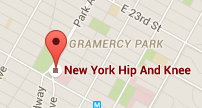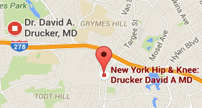Post-operative Instructions
You will wake up in the recovery room with a number of monitors to record your vitals (blood pressure, pulse, oxygen saturation, temperature, etc.). You will have a dressing on your hip and drains coming out of your wound.
Post-operative X-rays will be performed in recovery.
Once you are stable and comfortable you will be taken back to the ward.
You will have one or two intravenous lines in your arm for fluid and pain relief. This will be explained to you by your anesthetist.
On the day following surgery, your drains will usually be removed and you will be allowed to get out of bed or walk depending on your surgeons preference. Pain is normal but if you are in a lot of pain, inform your nurse.
You will be able to put all your weight on your hip and your physiotherapist will help you with the post-op hip exercises.
You will be discharged to go home or a rehabilitation hospital after 1-2 nights depending on your pain and help at home.
Sutures or staples are usually removed at about 10 days.
A post-operative visit will be arranged prior to your discharge.
You will be advised about how to walk with a walker for one to two weeks following surgery and then using walking aids for another four to six weeks as needed.
Pain Control
Narcotic Medicine to control your pain after surgery is essential part of your recovery. These medicines can cause undesirable side effects. It is important to try to reduce the dosage and frequency of these medications as soon as possible. There are alternative medications which may have fewer side effects. Please speak to Dr. Drucker about these medications.
Wound Care
If you have staples they will generally be removed around 2 weeks after surgery. Please call the office to make an appointment to have your staples removed.
Redness or Drainage
If your wound appears to be getting red or is having drainage please call Dr. Drucker.
Showering
A light wetting of the wound is permitted once it is completely dry and has no drainage. This is usually 7 days after surgery. Any questions call Dr. Drucker.
Antibiotics
No antibiotic should be prescribed for issues regarding your wound unless approved by Dr. Drucker.
Blood Clot Prevention Medication
All patients (with few exceptions) will leave the hospital on a medicine that is intended to help minimize the risk of developing blood clot complications.
Walking
Walking is highly recommended. Walk as much as you feel comfortable for at least 2-3 times a day. Each day try to go a little farther. In the first 3-6 weeks walking with a walker and a cane is important. You can slowly wean yourself off the cane, as long as you are not limping. This is a gradual process. Please be patient.
Dr. Drucker will choose a medication that is best for you. It is important that you understand what that medication is and how to take it. Any questions call Dr. Drucker.
Exercises
- Early (First 6 weeks)
- Walking
This is the most important exercise. Please walk 2-3 times a day, as far as tolerated.
- Ankle pumps
- Quad Sets (pressing the knee down)
- Gluteal squeezes
- Walking
- Later (after 6 weeks)
Dr Drucker will see you in the office at 6 weeks after surgery. He will evaluate your progress and advance your therapy and exercises accordingly.







